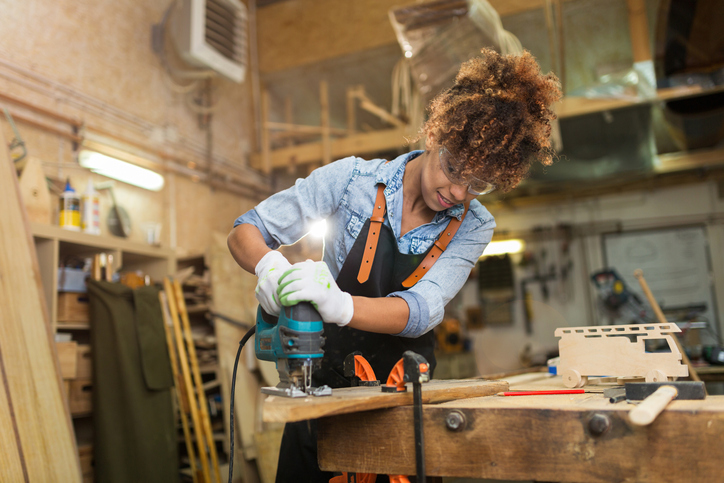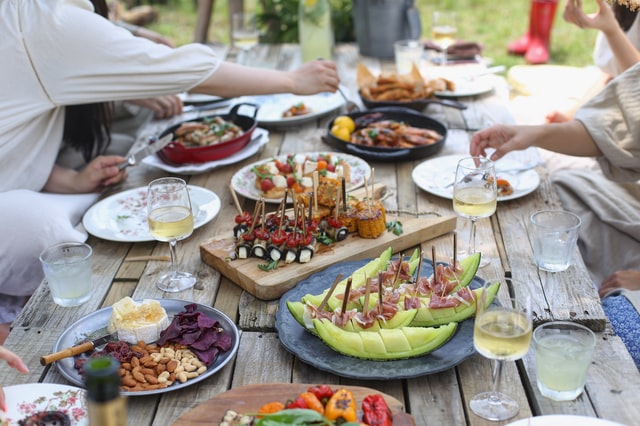In this Q&A with the experts, we’ll explore furniture renovation from a painting perspective.
We’ve reached out to experts in the area to get their best tips, tricks, and techniques on all things related to painting furniture, from chalk paint to other types and forms of painting.
The sky is the limit when it comes to using your creativity to renovate your furniture. You don’t have to throw away that old dresser or that kitchen table. With this expert roundup you’ll come to realize that everything can have a second chance, so get ready to fold your sleeves and get that brush ready.
Keep reading and discover what these experts have to say; you’ll learn easy tips and tricks to revamp every piece in your home.
Remember to check out the first part of this Q&A with the experts here, where we explore carpentry, upholstery, and finishing techniques for furniture renovation.
Painting
- What types of paint are appropriate for wood without damaging it?
“I don’t know of any paint that can’t be used safely on wood. With proper preparation and application, oil-based, water-based, latex, acrylic, Chalk, milk, metallic, spray paint, and more can all be applied to wood without damaging it. The type of paint you should use depends on how you want to apply it, how you want the finished piece to look, and its function. Similarly, removing any paint will not likely harm the wood itself but will certainly harm whatever finish was on the piece before painting. So if you don’t want to damage the finish on a piece of wood furniture (for example, the patina on an antique), my advice would be not to paint it.”
– Sylvia Worsnop | Transforming Trash
- When and why use airbrush painting instead of using a brush?
“We use airless assisted sprayers to reduce the time it takes to paint a project as well as when we want to achieve a cleaner finish that will not show brushstrokes.”
– Catherine Baldi | Arana Craftman Painters
- What type of paint and sealer do you recommend for a nursery? Something safe for children
“I highly recommend the Benjamin Moore Natura paint line for nurseries. It’s a Zero VOC & Emissions paint, which means you do not have to worry about poor air quality and toxin exposure in your child’s room. Benjamin Moore has an incredible line of colors, so you will not have to sacrifice style for safety.”
– Kelly Marohl | The Greenspring Home
- How to choose the correct paint color for every piece? Do you have any tips to keep things esthetically beautiful?
Here’s what I take into consideration when painting a piece of furniture.
1. What kind of wood, and how dark is the stain on the piece I plan to paint?
Those dark red mahogany pieces were all the rage back then, but mahogany tends to bleed through light colors. So, in this case, I would prime the piece, after cleaning, with a degreaser. A spray primer, like Sherwin Williams Pro Blocker, will allow you to paint your piece a lighter color and reduce the number of coats needed.
Otherwise, if you don’t want to prime, I’d choose a darker paint color, like Fusion’s Ash, after a good cleaning.
2. Am I painting this piece for my home or to sell?
If you’re painting to sell, choose neutrals, like a white-white or cream color. If you’re choosing a color for your own home, we offer color sticks to take home. See the colors in your home’s natural light and consider how they look with flooring, wall, and major furniture colors.
I choose bold colors for small accent pieces and usually opt for more neutral colors on larger pieces.
Be sure to have a good paintbrush. This is not the place for a dollar store brush. My theory is the finer the bristle, the finer the brush stroke. We have a number of great brushes, under $10. Clean them well after each use, and they will serve you well!
Watch out! Furniture painting can be addicting!
Barbara Bussey | The Treasured Home
- How do you avoid visible brush strokes in the paint?
“This is such a great question. In my experience, there are three important things needed to avoid brush strokes.
- How would you describe in simple terms the difference between painting furniture with latex, acrylic, chalk paint, and milk paint? Which one do you like best?
Each paint has pros and cons. Chalk paint and milk paint are explicitly formulated for painting furniture; they don’t usually require a primer, go on smoothly, distress easily, and give a beautiful finish. Even though latex paint isn’t specifically made for painting furniture, it can still give a long-lasting finish as long as you start with a quality primer and finish with a quality topcoat. My personal favorite paint for furniture is General Finishes Milk Paint. Even though it is called milk paint, it is actually an acrylic paint that goes on smoothly, doesn’t require a primer, and gives a very durable finish.
Carrie Spalding | Lovely Etc.
- What are the best ways to finish outside furniture to resist the elements?
The best way is for metal furniture to be coated with a good rust-proof primer, your wooden pieces need to be coated with a water-proof sealer or clear coat to protect them from the elements.. they need to be totally covered on the bottom and the top.
– Arnaud Kuhlein | Painter’s Care
Chalk Paint
- Which are the most common mistakes people make when chalk painting?
“When chalk painting, the most common mistake people make is not understanding how to seal the paint when using soft wax. They often opt to seal with clear poly instead as they are afraid or don’t know how to use the wax.
A few buffed soft wax coats will give a smooth factory finish look when one applies a thin coat and then buffs the surface with a soft, lint-free cloth using a circular motion.
Buffing is nothing more than applying some muscle as you move the cloth over the waxed surface until the cloth slides easily over the surface. This can take some time, depending on how detailed the piece you are working on is. Additional thin layers of wax can be applied over existing ones to build up sheen and durability that will last a long time.”
Diane Henkler | In My Own Style
- What are the different styles you can create with chalk paint?
“The great thing about chalk-style paint is that you can really create anything your heart desires! It can be done with a little paint and some creativity, from distressed shabby chic to sleek and modern (and everything in between). Whether you like subdued, neutral colors and a modern finish, or your style is more outspoken and expressive, the chalk style paints from Country Chic Paint will help you create your.”
– Sarah Archer | Country Chic Paint
Milk Paint
- What do you love about milk paint? And why do you think it hasn’t become as popular as chalk paint?
“Having been around for thousands of years, milk paint is one of my favorite mediums to work with! Its natural chipping and flaking allow you to create an authentically old look that you can’t get from modern paints. However, since it comes in a powdered form, it can be trickier to perfect and use on various surfaces, unlike pre-mixed chalk paint. While both can give you a beautiful finish, chalk paint has gained incredible popularity due to its ease of use.”
Lisa Silfwerbrand | Recreated Designs
- How do you prepare a piece for milk painting?
“Two of the absolute greatest benefits of working with milk paint are its earth-derived, non-toxic formula and its ease of use. There is no prep required, short of a light cleaning of the piece, and because paint stripping and priming are unnecessary and not recommended with Junkyard Goddess Milk Paint, the use of harmful chemicals is avoided.”
– Michelle Dolon | Junkyard Goddess
- What’s the difference between milk paint and chalk paint?
“Both Chalk and Milk Paint are made with chalk, pigments, and a binder. In the case of the Chalk Paint, the binder is a petroleum-based acrylic polymer, which simply makes the Chalk Paint a modified house paint, that is even more matte than flat paint. Sinopia Milk Paint, on the other hand, uses the milk protein casein as glue and an emulsifier, which allows the base to also contain flaxseed oil. This means that in the Sinopia Milk Paint, you get the dual bond of the casein glue and flaxseed oil, coupled with the convenience that is associated with water-based house paint.
– Alex Warren | Sinopia Milk Paint
When it comes to furniture renovation, the magic is in the details, as these experts have taught us, so remember to keep in mind their advice and keep this guide handy.
This article is still developing.




